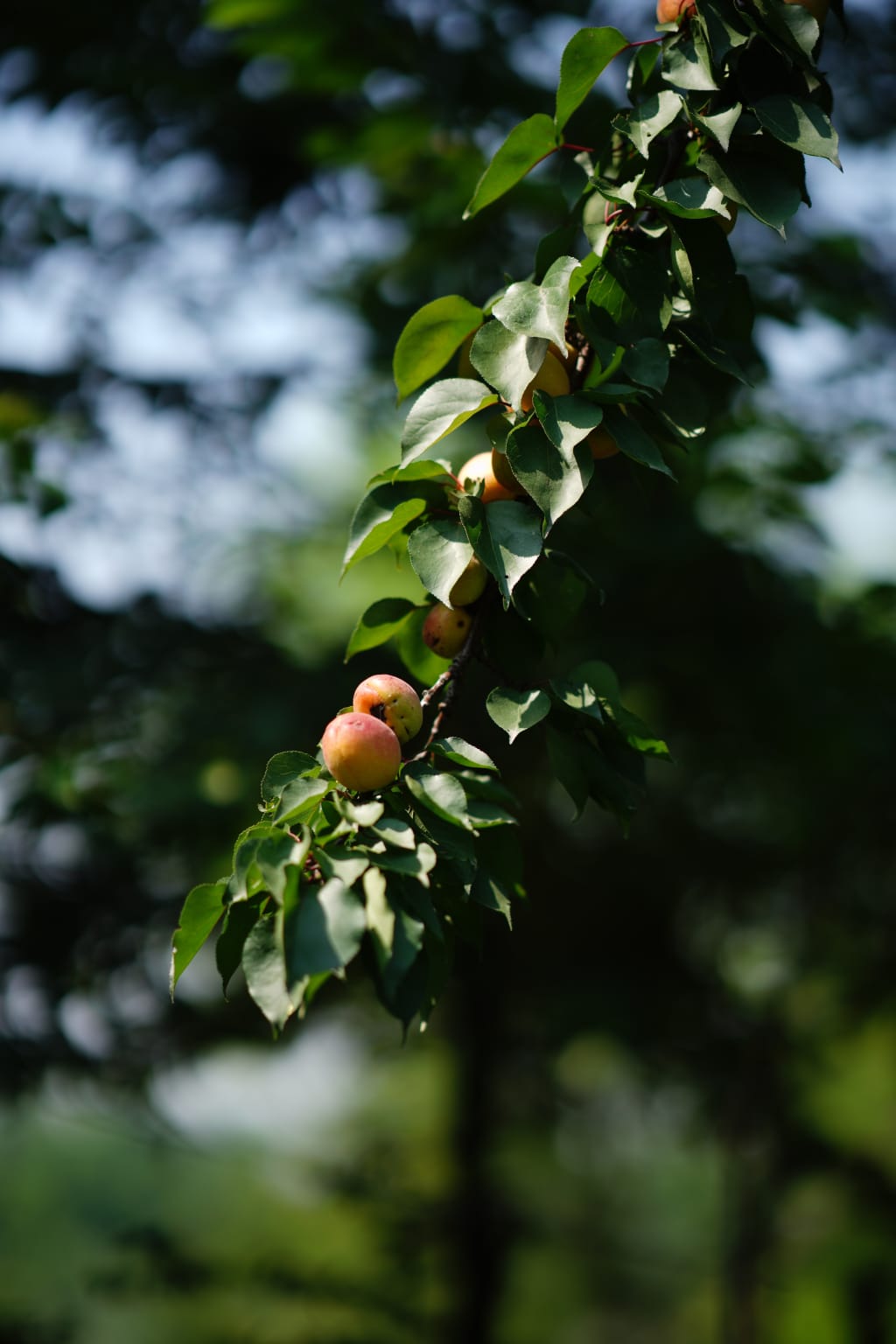Some of the Most Expensive Food from Around the World
From Mexican Dragon Fruit to Miyazaki Mangoes

Embarking on a gastronomic journey across the globe, we ventured to discover the intriguing stories and delectable flavors behind some of the world's most expensive foods. Our first destination was Mexico, where farmers cultivate Pattaya, a unique type of dragon fruit. A batch of 4,000 vibrant Pattaya fruits can sell for a staggering $7,400, which can significantly impact the economy of a whole town during the growing season.
In the arid Mexican state of Jalisco, Pattayas flourish on 30-foot high cacti, requiring farmers to brave sharp spines and sweltering heat to reach these incredibly sweet and juicy fruits. However, time is of the essence, as Pattaya loses its flavor and texture within 24 hours of being picked, making distribution incredibly challenging and driving its price even higher. In Guadalajara, Mexico, a batch of 4,000 Pattayas can fetch over $7,400, while in the US, obtaining a bucket of five fruits can cost up to $22.
The uniqueness of Pattaya lies in its growth on cacti, similar to prickly pears and dragon fruit, but it can only be found in Mexico and certain parts of the US. The Mexican state of Jalisco relies heavily on Pattaya during its growing season, becoming a major driver of the local economy.
Trinidad, a farmer with 15 years of experience working with Pattayas, has his hands full during the growing season, harvesting the fruits during the night and early morning from the 30-foot-tall Organ Pipe Cacti. The challenge is heightened by the fruit's extreme perishability, lasting only 24 hours before losing texture and flavor, which drives the price even higher.
Pattayas are a scarce commodity due to their limited growth in small numbers, with an Organ Pipe Cactus producing only one fruit per day or 60 fruits for the entire season. It takes at least eight years for the cactus to start bearing fruit sparingly and 15 years to reach full maturity. In comparison, a dragon fruit cactus at full maturity can yield three waves of 100 fruits each.
To keep the fruit fresh, Trinidad and other farmers must process the Pattayas immediately after picking, carefully removing the dozens of spines by hand without damaging the fragile fruit. With such a short shelf life and limited supply, Pattayas are a highly sought-after delicacy, demanding high prices and making their cultivation a vital source of income for local communities in Mexico.
Next, we traveled to Miyazaki, Japan, where we encountered the astonishing sight of Taio no Tamago, also known as the "Egg of the Sun," fetching prices as high as $4,000 for a pair of mangoes. These plump, red, and incredibly sweet mangoes are cultivated with utmost care by farmers in the Miyazaki prefecture, dedicating an entire year to preparing them for auction.
The meticulous process of growing Taio no Tamago involves ensuring proper pollination through the use of bees, as well as precise care for the mangoes' growth. Farmers rent bees during the flowering season to increase the likelihood of successful pollination. Once the mangoes reach full maturity, they are carefully harvested and inspected for their appearance, size, and sugar content to determine their quality.
At the annual auction in Miyazaki Central Wholesale Market, the best Taio no Tamago mangoes are put up for bidding, with the highest prices reaching extraordinary figures. Takuya, a mango farmer in Miyazaki, has been remarkably successful in producing top-quality mangoes, consistently fetching the highest prices at the auction for three consecutive years.
Takuya's dedication to providing his mangoes with the perfect environment and sunlight has resulted in unmatched flavors and textures, making his mangoes the most sought-after in the market. However, the process is challenging and uncertain, as even with careful care, there's no guarantee that the fruit will fetch such high prices at auction.
Finally, we ventured to India, where we explored the labor-intensive and meticulous process of harvesting water lily seeds, known as Fox nuts. These seeds, when popped, transform into a popular and healthy snack, commanding a price of over $170 per kilogram.
The journey to collect water lily seeds begins by wading through water up to four feet deep in flooded lowlands, plucking the seeds from the thorny water lily plants. The collection process is laborious and requires intense physical effort to ensure a successful harvest. The collected seeds are then carefully roasted and popped, a process that determines the quality and flavor of the final product.
Despite the challenges and risks associated with the harvest and production, the unique taste and nutritional benefits of Fox nuts have driven their popularity both locally and internationally. The demand for this delicacy has even led to farmers repurposing abandoned lowlands to cultivate water lily plants and cater to the growing market.
In conclusion, these stories and flavors behind some of the world's most expensive foods reveal the passion, dedication, and craftsmanship of farmers and producers worldwide. The high prices these foods command are a testament to their rarity, uniqueness, and exceptional quality, making them truly extraordinary culinary delights.
Royal quinoa, a variety of quinoa that grows only in southern Bolivia near the Salar de Uyuni salt desert, has become a prized global superfood due to its exceptional nutritional qualities. In recent years, its price has soared, sometimes reaching twice the cost of rice. The uniqueness of Royal quinoa lies in its larger size and higher nutritional content compared to other quinoa varieties.
The traditional methods of harvesting quinoa are still followed in Bolivia, as the mountainous terrain makes modernizing production challenging. Farmers begin their work early in the morning to avoid humidity and thrash the quinoa to separate the grains from the stems using tractors. The grains are then sifted to remove any remaining stems.
After thrashing, quinoa requires a thorough process to remove saponin, a bitter-tasting chemical that protects the outer shell of the seeds. Royal quinoa contains a higher amount of saponin, allowing it to grow in extreme conditions. This extensive cleaning process increases labor costs as much of it must be done by hand.
Once cleaned, the quinoa is separated and sent for processing, while some parts are still done manually. The arduous process and the relatively small-scale production drive up the price of Royal quinoa. With increasing global demand and Bolivia's quinoa production expanding, prices skyrocketed, transforming the lives of many farmers. However, the intense cultivation has led to soil erosion, fertility issues, and reduced yields.
In recent times, the price of Royal quinoa has dropped significantly due to increased competition from other countries and decreased soil quality in Bolivia. Peru has now taken the lead as the world's top quinoa producer, while Bolivia faces challenges in modernizing its production and maintaining the high price tag for Royal quinoa. Despite this, quinoa remains a cherished crop and a valuable part of Bolivia's cultural heritage.
Bolivia is also seeking to revitalize its market for Royal quinoa as the global quinoa market is valued at around 90 billion dollars and expected to reach nearly 150 billion dollars by 2026. In 2020, Bolivia's Royal quinoa industry successfully obtained a protected designation of origin, which will help establish Royal quinoa as a high-quality product exclusive to Bolivia, similar to Spain's Iberico ham or Italy's San Marzano tomatoes. This move is expected to boost Royal quinoa sales in the international market and enable producers to raise prices, leading to modernization while ensuring sustainability.
The key to authentic Dijon mustard lies in its seeds. Unlike other types of mustard that use white seeds, Dijon mustard is made with black mustard seeds, which impart a tangy and sharp flavor. Named after the town of Dijon, France, only a few jars of Dijon mustard are made with locally sourced black seeds, making them up to six times more expensive than regular Dijon mustard. The black mustard seeds used in Dijon mustard are more aromatic due to their high cinegren content, the natural component responsible for the pungent aroma of mustard.
The process of making burgundy mustard, which is a Dijon mustard made with local French ingredients, sets it apart from regular Dijon mustard and keeps its prices high. Burgundy mustard is ground using a slow Stone Mill, as opposed to an automated steel mill, which allows for only 100 tons of seeds to be ground per day. The resulting flavor justifies the slower process, as it preserves the spiciness of the seeds by keeping the paste at room temperature.
To achieve Dijon mustard's distinct creaminess, the paste goes through a sieve, separating the yellow kernels from the rinds. While Dijon mustard originally used verjuice, a green juice made from unripe grapes, to add acidity and preserve the mustard, the recipe evolved to use a combination of white wine and vinegar, which are still commonly used today. Burgundy mustard, on the other hand, is made exclusively with wine, specifically from the local grape variety called aligote, which imparts a fruity flavor to the mustard.
The town of Dijon and the surrounding region of Burgundy used to produce 90% of France's Dijon mustard, but local seeds have become much rarer. Most producers now source their mustard seeds from other countries, with Canada being a significant supplier, producing 35% of the world's mustard seeds. Using foreign seeds is more convenient and up to 50% cheaper than using French seeds. However, the shortage of local seeds is attributed to a steady decline over the last century, partly caused by a 1957 European Union policy that affected agriculture.
The few jars of Dijon mustard made with local French seeds are now labeled as burgundy mustard, and the label was protected in 2009, similar to champagne and other regional products. However, out of the over 300 mustard mills once present in the region, only five remain, with most of them being industrialized. From harvesting the seeds to the final bottled product, burgundy mustard faces challenges, including late frosts destroying mustard crops and the ongoing war in Ukraine driving up glass prices.
The traditional technique for extracting manumin, a type of wild rice, from its hull involves a series of steps performed by members of the Ojibwe tribe in the Great Lakes region of North America. Manumin, also known as "goodberry," is an essential part of the Ojibwe diet, rich in protein, vitamin B, and antioxidants. Harvesting manumin involves hand-harvesting the rice from canoes and drying it carefully. The rice is then parched on a wood fire and danced on by a person wearing moccasins to separate the grains from their hulls. The harvested rice is then carefully dried and processed further to prepare it for consumption. Manumin has a profound cultural and spiritual significance for the Ojibwe tribe and is harvested sustainably to maintain its delicate ecosystem.
Eskamoles, also known as "ant caviar," are small, bean-shaped larvae that are high in protein and have a buttery, earthy flavor. Harvesting eskamoles involves finding ant nests and carefully extracting the larvae by hand. The process is delicate as damaging the nest can harm the ants and disrupt the supply of eskamoles. The harvested larvae are then cleaned and can be prepared in various dishes. Eskamoles are most commonly eaten in Mexico, but their popularity has attracted inexperienced harvesters and poachers, threatening the ecosystem that supports the larvae. Sustainable harvesting practices and responsible management are crucial to preserving this century-old food. The prices of eskamoles can vary significantly, with high demand around Easter, and the delicacy is sometimes exported at higher prices.
About the Creator
Enjoyed the story? Support the Creator.
Subscribe for free to receive all their stories in your feed. You could also pledge your support or give them a one-off tip, letting them know you appreciate their work.





Comments
There are no comments for this story
Be the first to respond and start the conversation.